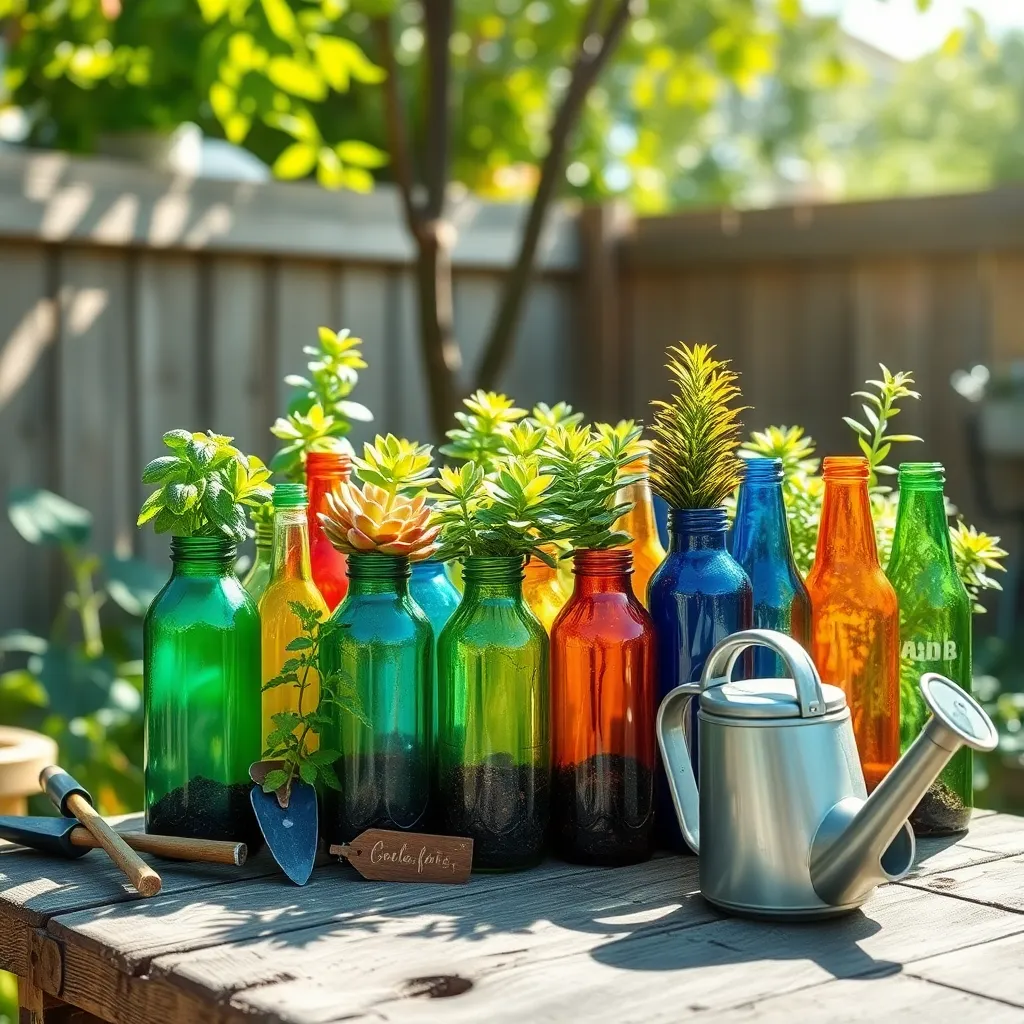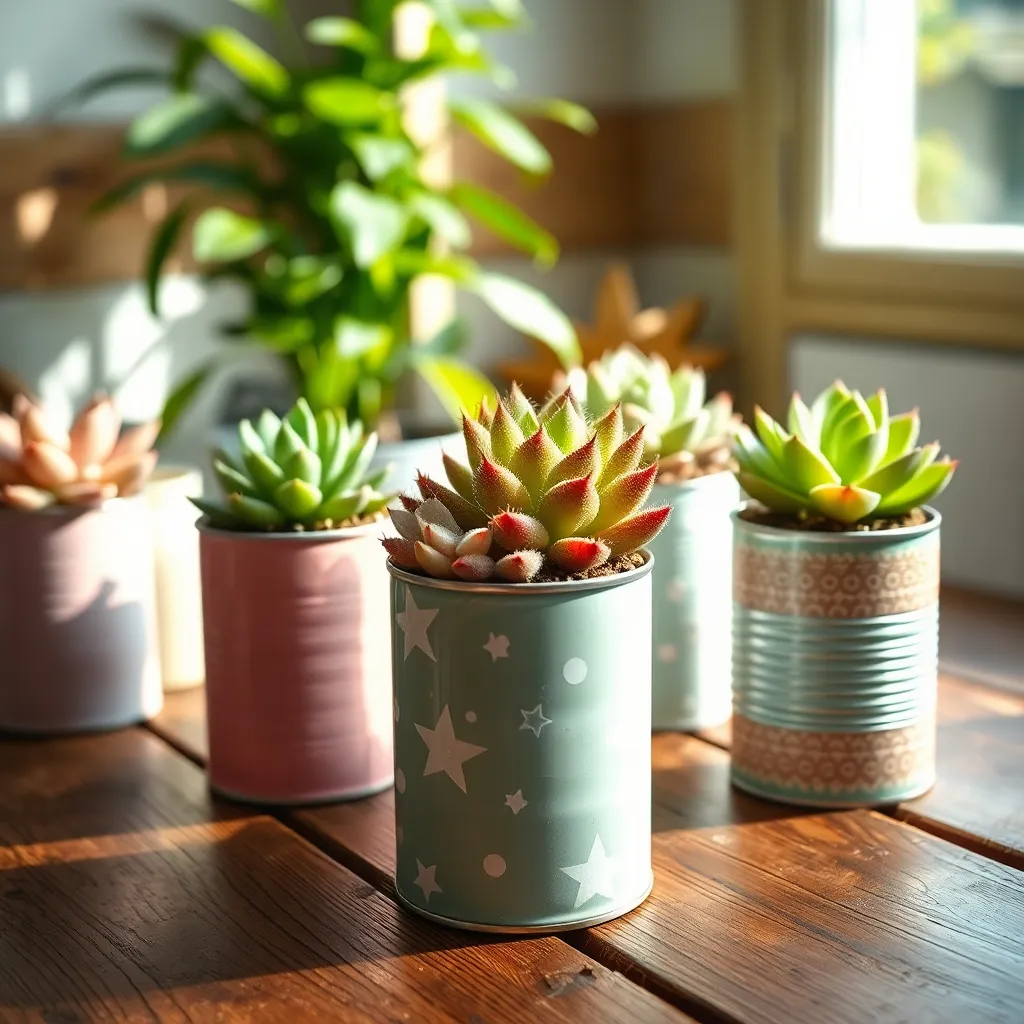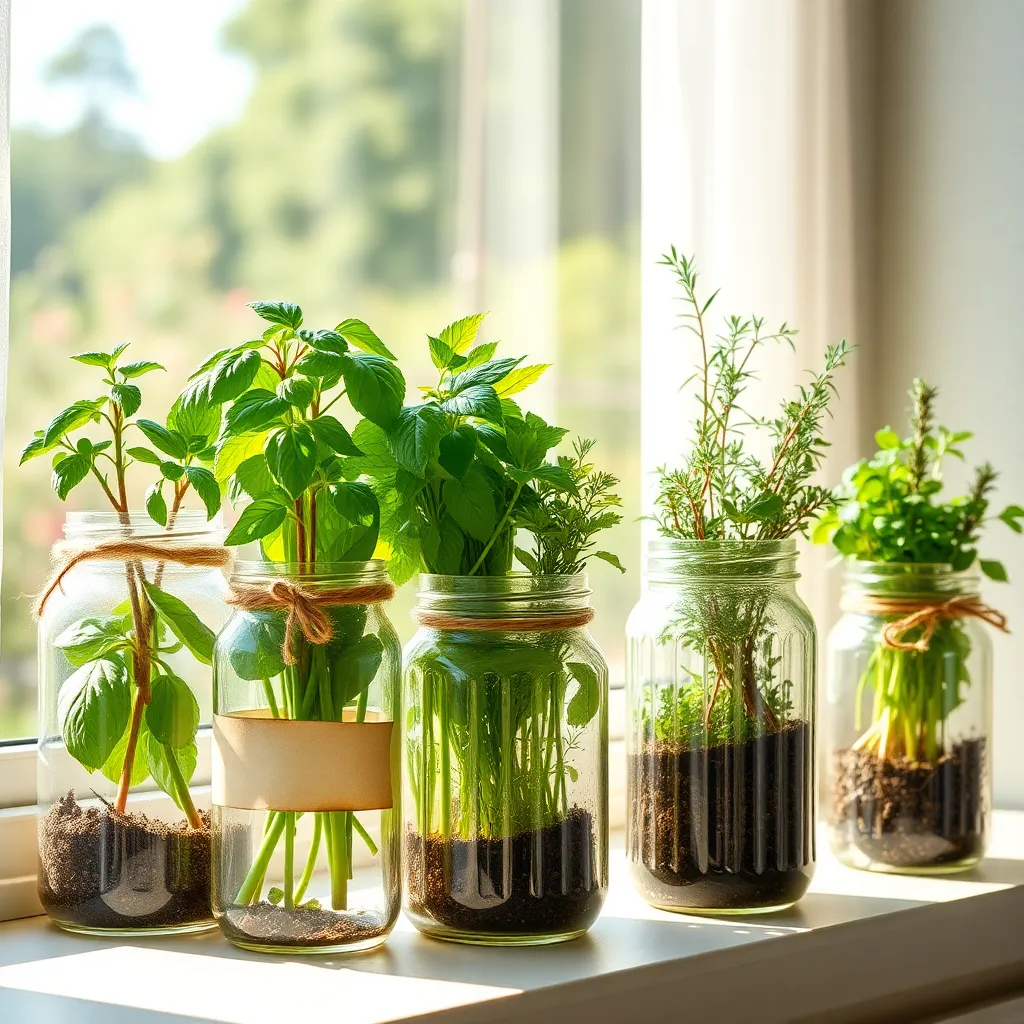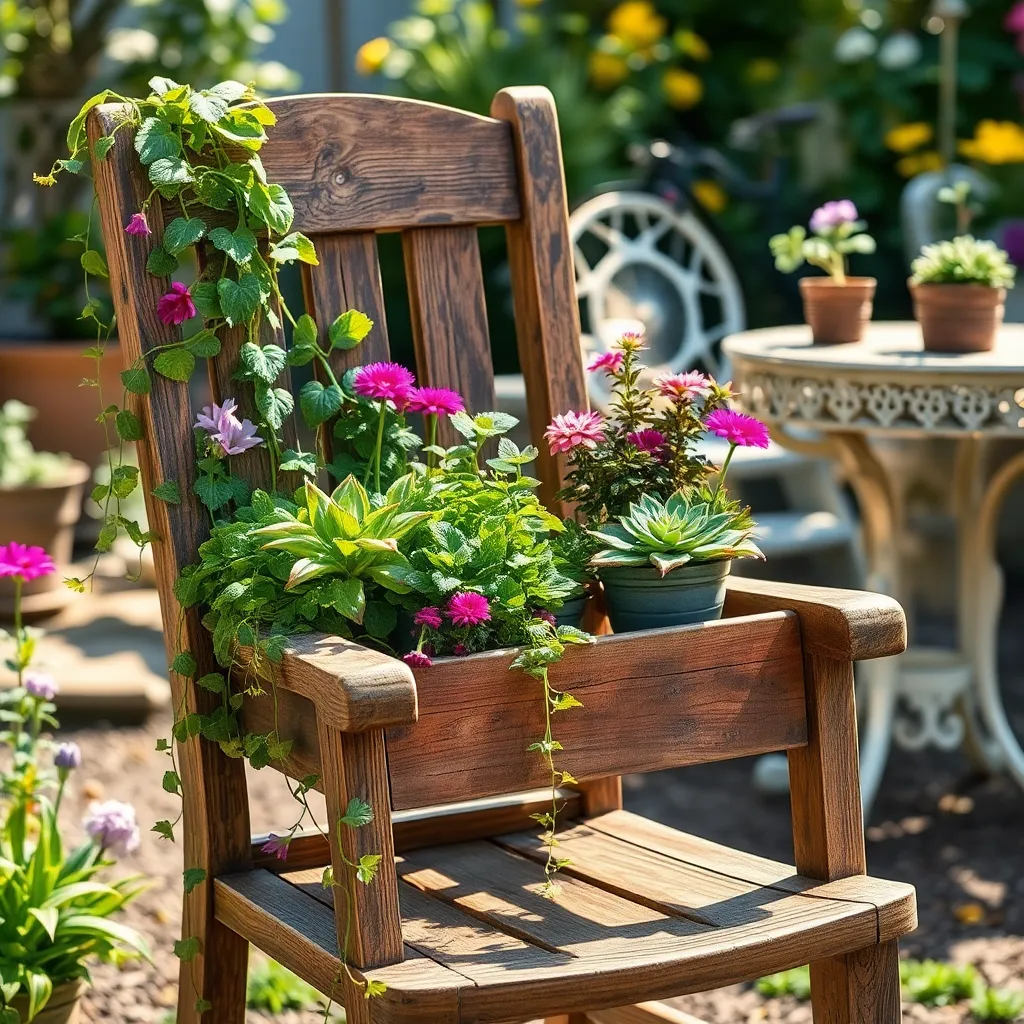Imagine stepping into your garden and seeing vibrant blooms and lush greenery, all housed in unique planters that you crafted yourself using everyday household items. The beauty of gardening is that it not only nurtures plants but also cultivates creativity and resourcefulness, allowing you to transform ordinary objects into extraordinary plant homes. Whether you’re a seasoned gardener looking to add a personal touch to your green space, or a beginner eager to dive into the world of horticulture, creating DIY planters is a delightful and rewarding endeavor.
In this article, we’ll guide you through the exciting process of repurposing items you already have around the house into charming planters, perfect for any gardening style. You’ll learn how to identify suitable materials, prepare them for use, and customize them to reflect your unique aesthetic and gardening needs. With these skills, you can elevate your garden’s charm without breaking the bank, making gardening a more sustainable and gratifying experience. From old teapots to worn-out boots, you’ll discover that potential planters are all around you, waiting to be given a new life amidst your garden’s blooms.
So, gather your creativity and enthusiasm as we embark on this journey of transforming household treasures into delightful plant havens. Whether your garden space is a sprawling backyard or a cozy apartment balcony, these DIY planter projects will make your green sanctuary truly your own. By the end of this article, you’ll not only have practical tips and tricks at your fingertips but also a renewed appreciation for the art of gardening with a personal flair. Let’s get started on making your garden a testament to your ingenuity and love for nature.
Upcycling Bottles into Planters

Upcycling plastic bottles into planters is an eco-friendly way to add creativity to your garden while reducing waste. Begin by cutting the bottle in half or creating a window along the side, ensuring you have adequate drainage holes at the bottom to prevent waterlogging.
Choose plants that thrive in small spaces, such as herbs or succulents, which require minimal soil and care. Fill the bottle with a well-draining potting mix—like a blend of peat, perlite, and vermiculite—to support healthy root growth.
Position your bottle planters in a location that matches the light requirements of your chosen plants. For example, place herb planters on a sunny windowsill, while succulents can thrive in bright, indirect light.
Watering is crucial, so monitor moisture levels by checking the top inch of soil; it should feel dry before watering again. Consider using a spray bottle for gentle watering, especially if your planters are small or if you’re growing succulents.
Transforming Cans for Succulents

Using cans to create planters for succulents is not only environmentally friendly but also a creative way to decorate your garden or home. Start by selecting cans of various sizes, ensuring they are thoroughly cleaned and free from sharp edges to prevent injury.
Once your cans are prepared, it’s essential to add drainage holes at the bottom. Succulents require well-draining soil to thrive, so consider using a drill or nail to create several small holes to allow excess water to escape.
Fill the cans with a specially mixed succulent soil, which you can make by combining equal parts of potting soil, perlite, and coarse sand. This blend offers the right balance of moisture retention and aeration, crucial for healthy succulent growth.
When planting your succulents, choose species that are compatible with your environment, such as jade plants or echeverias, which are hardy and adaptable. Position the succulents so that their roots are covered but the base of the plant remains above the soil line to prevent rot.
Ensure your succulent cans are placed in a spot where they receive ample sunlight, ideally six hours of indirect light daily. Water sparingly, allowing the soil to dry out completely between waterings, which usually means every two weeks, depending on humidity levels.
For an advanced touch, you can decorate your cans with paint or fabric to match your indoor or outdoor decor. Personalizing your planters not only enhances their aesthetic appeal but also adds a unique touch to your gardening space.
Repurposing Jars for Herb Gardens

Repurposing jars for herb gardens is a fantastic way to create a functional and attractive indoor garden. Start by choosing jars with a wide opening to allow your herbs ample space to grow and thrive.
Ensure your jars have proper drainage by adding a layer of small stones or pebbles at the bottom. This step is crucial to prevent waterlogging, which can lead to root rot in your herbs.
Fill the jars with a well-draining potting mix, ideally one that contains a mix of peat moss, perlite, and vermiculite. This type of soil will provide the right balance of moisture retention and aeration, making it perfect for herbs.
Plant herb seeds or small seedlings, such as basil, thyme, or parsley, into the prepared jars. Position your jars on a sunny windowsill where they can receive at least six hours of sunlight daily for optimal growth.
Water your herb jars consistently, but be cautious not to overwater. Allow the top inch of soil to dry out between waterings to maintain the proper moisture level for your herbs.
For a more advanced touch, consider adding a DIY self-watering system using cotton string to wick water from a reservoir below the jar. This technique helps maintain consistent moisture levels, especially useful for busy gardeners.
Crafting Planters from Old Tires

Transforming old tires into planters is an eco-friendly way to add character to your garden. Begin by thoroughly cleaning the tires with soap and water to remove any dirt or residues.
Once clean, paint the tires to protect them from the elements and add a pop of color to your garden. Use outdoor-grade spray paint for a long-lasting finish, and ensure it dries completely before planting.
To prepare your tire planter, drill several drainage holes in the bottom to prevent waterlogging. Fill the tire with a mix of good-quality potting soil and compost, which provides essential nutrients for plant growth.
Tire planters are ideal for growing a variety of plants, from colorful annuals to hardy perennials. For beginners, consider starting with marigolds or petunias, which thrive in well-drained soil and full sun.
Experienced gardeners might try growing vegetables like tomatoes or peppers, which require at least 6 hours of sunlight and consistent watering. Ensure the soil remains moist but not soggy by checking it regularly and adjusting your watering schedule accordingly.
Turning Furniture into Garden Displays

Transforming old furniture into garden displays is a fantastic way to add character and functionality to your outdoor space. Start by choosing sturdy pieces like dressers or bookshelves that can withstand outdoor conditions, ensuring they have good drainage to prevent waterlogging.
Consider using an old dresser by removing the drawers and filling them with a mixture of potting soil and compost. This setup is ideal for growing shallow-rooted plants like lettuce or herbs, which require consistent moisture but not deep soil.
For a vertical garden, repurpose a wooden ladder by placing planks across the rungs to create shelves. This arrangement allows you to display a variety of potted plants, ensuring each receives adequate sunlight—ideal for sun-loving plants such as succulents or geraniums.
Be sure to seal wooden furniture with a weatherproof finish to protect it from the elements and extend its lifespan. Additionally, consider using a lightweight potting mix to ease the weight on the furniture, especially if it will be moved frequently or placed on a deck or balcony.
Conclusion: Growing Success with These Plants
In exploring the delightful world of DIY planters using household items, we’ve uncovered five key relationship concepts: creativity, collaboration, communication, adaptability, and nurturing. Just as you transform everyday objects into beautiful planters, relationships thrive when partners creatively solve problems together. Collaboration strengthens bonds, while open communication ensures that both voices are heard. Adaptability allows you to weather life’s changes, and nurturing the relationship keeps it flourishing, much like tending to a growing plant.
Now, take a moment to choose one small project from your home—a jar, a mug, or a tin can—and transform it into a planter with your partner. This simple yet meaningful activity not only enhances your surroundings but also reinforces these vital relationship principles.
Don’t forget to save or bookmark this article for future inspiration. As you nurture these DIY creations, let them serve as a reminder of the vibrant, flourishing partnership you’re cultivating. Remember, every little action you take today lays the foundation for lasting relationship success. Embrace the journey together, and look forward to growing stronger, deeper connections with your loved ones.

